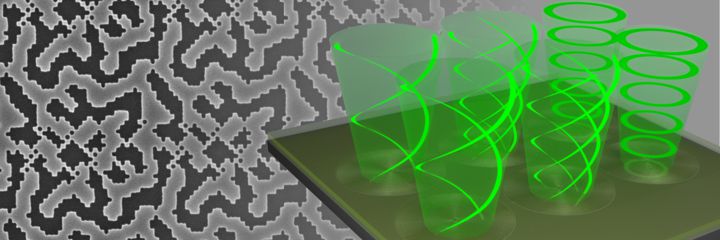Photonics
PhD projects
We're recruiting PhD students for a range of projects.
Optics and Photonics are central to modern life. Fibre optic cables carry information over the internet, optical displays allow us to interact with our smartphones, and we use photonics for highly accurate measurements such as gravitational wave detectors, for precision manufacturing and for a plethora of medical diagnostics tools. Photovoltaics has advanced to the extent that in many parts of the world, solar power is now cheaper than burning fossil fuels.
The Photonics theme addresses some of these exciting topics by studying the emission and propagation of light in novel materials and in novel types of nanostructures. In particular, we aim to understand and control the interaction of light and matter and to build functional devices that benefit from this understanding, including optomechanical phenomena. Our core experimental competence is the ability to design and fabricate photonic crystals and other wavelength-scale structures that manipulate the flow of light. This includes optical vortex beams and other novel waveforms and the study by both theory and experiment of how these influence the properties of nano systems with which they interact. The theme’s activities span the study of nanostructured materials, biophotonics and photovoltaics.
More specifically, research topics in the group include;
- Developing novel nanophotonic structures and devices for sensing applications
- Interaction with biological molecules, cells, bacteria and tissues with the goal of extracting more information about their function
- Exploring novel optomechanical systems, including rotation-induced interactions.
- Exploring novel beams including vortex beams and other beams with bespoke phase distribution.
- Developing silicon-based nanophotonic devices, including light emission based on novel gain materials.
- Exploring novel nanostructures for improving the performance of photovoltaics devices.
- Analysing nonlinear nano-optomechanical transduction schemes based on quantum emitters, low dimensional excitons and/or mechanical instabilities.
- Understanding the mechanical dissipation of optomechanical systems, including stress dilution and phonon-radiation damping.
People
- Prof. Thomas Krauss:
Photonic crystals, Biophotonics and biosensing. Silicon photonics, Photovoltaics - Prof. Mohammed Babiker:
Atom Optics and Quantum Optics, Laser Cooling and Trapping, Orbital Angular Momentum of Light; matter vortex beams - Dr. Ignacio Wilson-Rae:
Quantum optics of photonic nanodevices, optomechanical and nanomechanical systems. Mechanical dissipation of high-Q nanomechanical resonators. - Dr Yue (Christina) Wang

